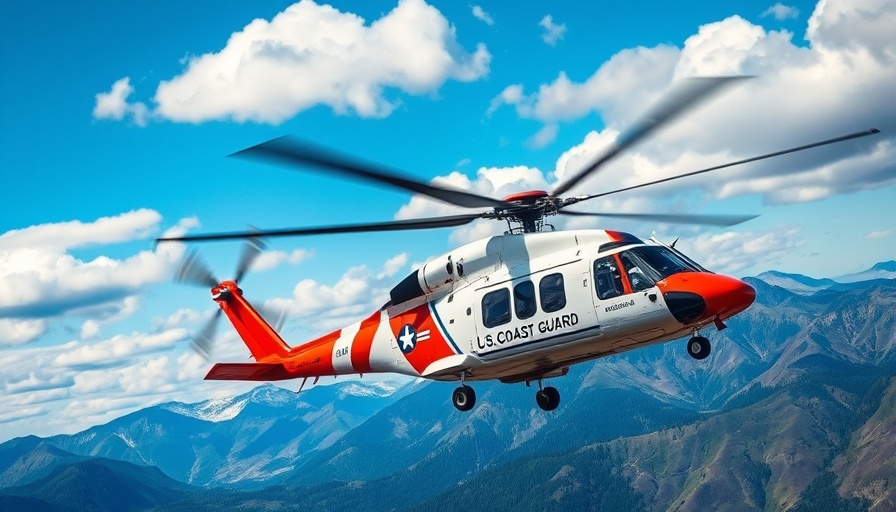
Coast Guard’s Ambitious Fleet Expansion Plans in Focus
As the U.S. Coast Guard moves forward with its plans for strengthening its aerial capabilities, recent contract actions highlight an exciting evolution in its mission capabilities. The Coast Guard is prepared for a significant aircraft fleet expansion, especially with recent investments directed towards enhancing both operational efficiency and the ability to respond to emergencies.
Investments Fueling Fleet Growth
The Coast Guard recently made substantial financial commitments to boost its aerial fleet. An order placed for 13 General Electric T700 engines amounts to $14.3 million, specifically aimed at enhancing the MH-60 medium-range recovery helicopters. Additionally, L3 Harris Technologies Inc. secured a $13.9 million contract for three AN/APY-11 multi-mode radar systems intended for HC-130J long-range surveillance aircraft. What makes these purchases especially significant is that they were facilitated by the government's One Big Beautiful Bill Act (OBBBA), designed to modernize the Coast Guard's aging fleet.
The Future of Coast Guard Operations
The MH-60 helicopters, with their advanced range, speed, and capabilities, will not only enhance search and rescue operations but also bolster law enforcement efforts across the country's maritime boundaries. The transition from the older MH-65E helicopters is critical, especially as the supply support dwindles for these out-of-production aircraft. As the new MH-60s come into play, they will provide vital services in tracking illicit activities and performing rescue operations.
Enhancing Surveillance and Response Capabilities
The AN/APY-11 radar represents a leap forward in how the Coast Guard will undertake its operations. This radar system is part of the Minotaur Mission System, which integrates data collection and analysis functionalities. This combination allows the Coast Guard to conduct a broad range of missions more efficiently, from drug interdiction to search and rescue efforts, while also paving the way for improved coordination during crisis responses.
Broader Implications for National Security
The expansion of the Coast Guard's capabilities is not just a local improvement; it has strong implications for national security. The HC-130J fleet serves as a vital airlift asset for the Department of Homeland Security, providing critical support during crises and offering logistical assistance during regular operations. This expansion will ensure that these aircraft remain ready to respond to any national emergencies, showing the Coast Guard’s commitment to protecting both the borders and maritime landscapes of the United States.
The infusion of over $3.3 billion through the OBBBA indicates a dedicated effort to foster maritime safety and security. This includes not just new aircraft but also simulators for pilot training, ensuring that the personnel who operate these advanced machines are well-prepared for the challenges ahead.
Conclusion: The Road Ahead for the Coast Guard
As the Coast Guard embarks on this expansive journey to modernize its aircraft fleet, the investments being made today will forge a path for a safer, more secure tomorrow. The continuation of these enhancements will not only empower the Coast Guard's operational readiness but will also significantly improve community safety across our nation’s shores. The public can expect to see a more vigorous response to maritime emergencies and a proactive approach to national security. The future is bright for the Coast Guard!
 Add Row
Add Row  Add
Add 




Write A Comment